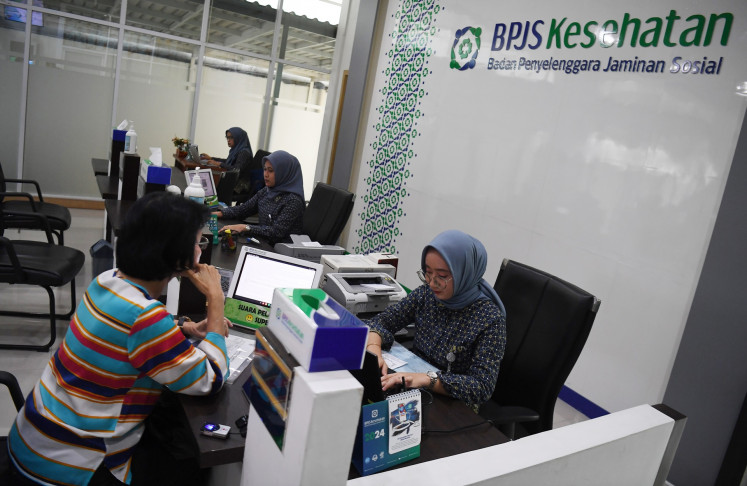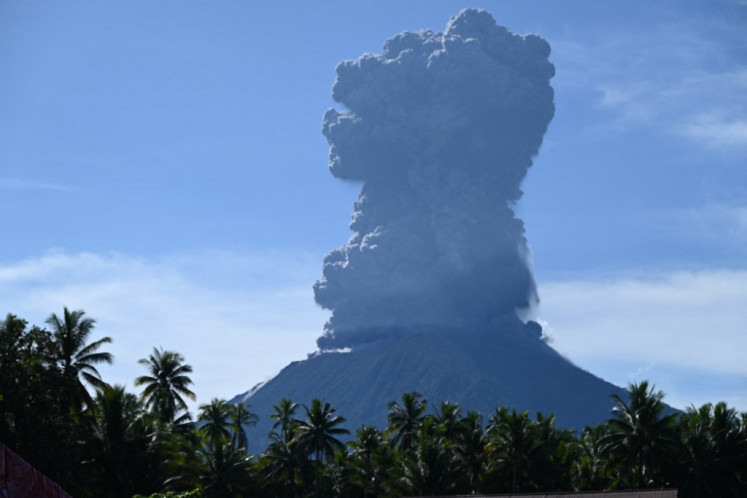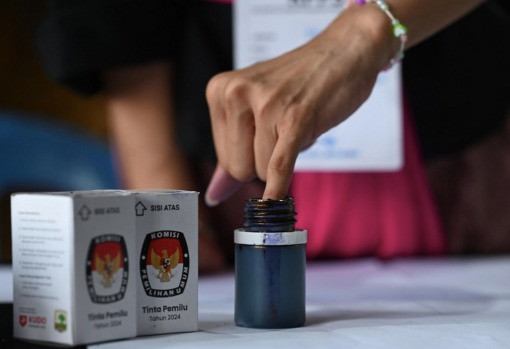Can Indonesia stop deforestation?
Environmentalists and the general public were elated in mid-February when news broke that the Indonesian and Norwegian governments had come to an agreement that the latter would pay the former for reducing its carbon emissions
Change Size

E
span>Environmentalists and the general public were elated in mid-February when news broke that the Indonesian and Norwegian governments had come to an agreement that the latter would pay the former for reducing its carbon emissions.
The agreement was part of the countries’ cooperation under the Reducing Emissions from Deforestation and Forest Degradation (REDD+) scheme that was signed in 2010. Norway has also been working with several other countries under similar schemes, such as Brazil, Guyana and the Democratic Republic of Congo.
Almost a decade after the signing of the US$1 billion pledge with Indonesia to help protect the latter’s tropical forests, Norway agreed to make the first payment after Indonesia reported a drop in the deforestation rate in 2017, according to a statement from the Norwegian Embassy in Jakarta on Feb. 16.
According to data from the Environment and Forestry Ministry, the country saw a decline in the deforestation rate in 2017, with 480,000 hectares of forest lost, a figure slightly lower than previous years. The decrease is believed to have prevented the release of about 4.8 million tons of carbon emissions into the atmosphere.
Apparently, the slowed rate of deforestation may not have been the sole factor that convinced Norway to agree to make its first payment, as the government had also issued a number of regulations that were deemed to have contributed to keeping the forests intact, the ministry claimed.
One regulation was a moratorium on new palm oil plantations issued by President Joko “Jokowi” Widodo last September. Through an official instruction, the President instructed ministers and regional administrations to halt the issuance of new permits for palm oil plantations and review the existing permits amid concerns about deforestation.
Moreover, the ministry’s Climate Change Director General Ruandha Agung Sugardiman said the government had convinced Norway by showing that Indonesia had the capacity to fund all its measures to reduce deforestation.
The money will be transferred from a public service body (BLU) on forestry under the ministry’s authority to a new body formed by the Finance Ministry that will be tasked with managing all environmental funds.
“The old BLU has around Rp 500 billion [US$35 million] for environmental matters, including tackling deforestation. Once the funds are transferred to the new body, we will have a stronger position to show Norway in terms of our capacity to fight deforestation,” Ruandha told The Jakarta Post recently.
He added that the finance minister had promised to issue a regulation on the functioning of the new BLU in March.
Ruandha said the funds from Norway’s first payment would be managed by the body, with some to be used as incentives for regions that had been implementing REDD+ at the subnational level.
Regions such as East Kalimantan, Jambi, West Kalimantan, Aceh, South Sulawesi and Central Kalimantan have been actively implementing REDD+ since the early days of the cooperation.
The climate change director general said the ministry would look into each region’s performance in implementing REDD+, such as by looking at whether the region had an action plan to cut deforestation or had formed a working group to implement the scheme.
The central government, however, had yet to decide on the appropriate model for disbursing the incentives, Environment and Forest Ministry forest monitoring and inventory director Belinda A. Margono said.
“There are some possibilities including giving [provinces that succeeded in reducing deforestation] incentives in the form of fresh funds or other incentives such as tax cuts,” Belinda said recently.
Despite the good news, there is still a long way to go before Norway actually disburses the money to Indonesia, as Norway will need to independently verify the claims made by Indonesia, as stipulated in the agreed protocol.
“We are [also] now in the process of agreeing on the amount. Hopefully we can have this in the very near future,” Norwegian Ambassador to Indonesia Vegard Kaale told the Post recently.
Concerns are also growing about whether Indonesia can ensure the declining deforestation rate becomes a trend and not just an anomaly, especially after the country saw worsening forest and land fires in 2018.
Throughout last year, the ministry recorded that more than 30,000 ha of land and forest was burned in wildfires, slightly higher than 11,127 ha in 2017.
Ruandha dismissed these concerns, saying the government already had sufficient regulations to prevent deforestation. “Apart from the palm oil moratorium, we also restrict people from cutting down forests that are still in good condition. These sets of rules are enough [to prevent further deforestation].”









